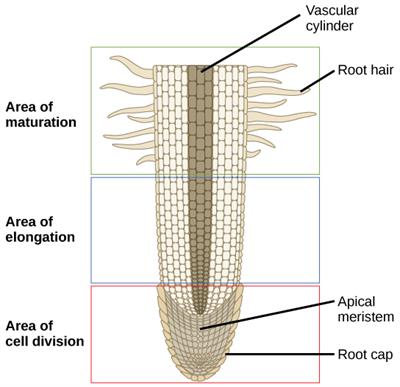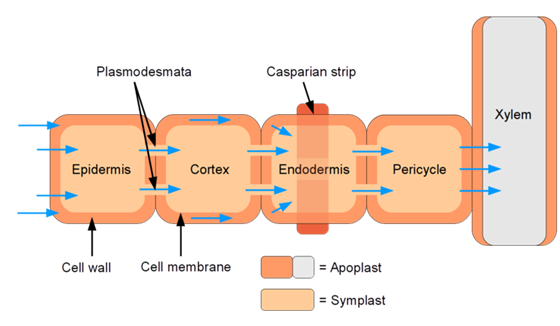
PUMPA - SMART LEARNING
எங்கள் ஆசிரியர்களுடன் 1-ஆன்-1 ஆலோசனை நேரத்தைப் பெறுங்கள். டாப்பர் ஆவதற்கு நாங்கள் பயிற்சி அளிப்போம்
Book Free DemoRoot hair - Water absorbing unit:

Root hair found on root tip
The root tip consists of millions of root hairs that absorb water and minerals by diffusion.
Root hairs are slender, thin-walled extensions of epidermal cells that increase the absorption surface area.
Root hairs are slender, thin-walled extensions of epidermal cells that increase the absorption surface area.
Pathway of water absorbed by roots:

Movement of water through root cortex cells to xylem vessels
As discussed, the water enters the plants through the root hairs. This increases the concentration of the water molecules inside the root hair cells than the cortex.
Due to this, the water from the root hair cells moves to the cortex by osmosis (higher concentration to lower concentration) and reaches xylem vessels. Water is then delivered to the stem and leaves.
Types of movement of water into root cells:
The water absorbed by the root hairs move into the deeper layers of the roots by two different types of pathways as follows:
- Apoplast pathway
- Symplast pathway

Apoplastic and symplastic pathway
Apoplastic pathway:
- This pathway involves the movement of water, particularly through the intercellular spaces and the walls of the cells.
- It does not involve the crossing of the cell membrane.
- It depends on the gradient across the membrane.
Symplast pathway:
- During this pathway, the water molecules move to the adjacent cells through the plasma
membrane, cytoplasm and plasmodesmata. - As this method involves the crossing of the cell membrane, it is a slower process.
- It relies on the concentration gradient.
A video describing the movement of water in plants
Reference:
https://commons.wikimedia.org/wiki/File:Figure_30_03_02.jpg
https://commons.wikimedia.org/wiki/File:Symplastic_and_apoplastic_water_flow_through_root.png